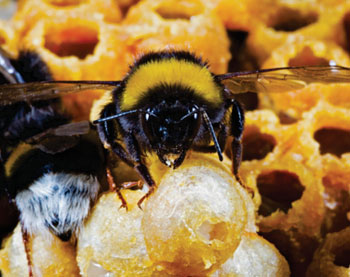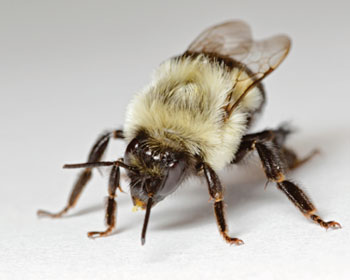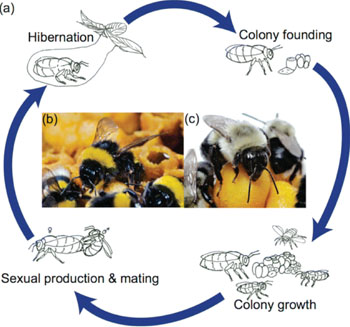Bee Genomes Create a Buzz in the Fields of Pollination and Immunology
By LabMedica International staff writers
Posted on 14 May 2015
In a large international collaborative study, the genomes of two important pollinating bumblebees have been sequenced, analyzed, and compared with those of other bees, laying an important foundation for identification of biological factors essential for their survival, evolution, conservation, and key roles in our ecosystem and food supply.Posted on 14 May 2015
Companion research papers present the first genome sequences and analyses of two key bumblebee species: the European buff-tailed bumblebee—Bombus terrestris, and the North American common eastern bumblebee—Bombus impatiens. The research focused on identifying similarities and differences between these transatlantic cousins, using bees from Thurgau (Switzerland), and Michigan (USA). The studies also compared them with their more distant relatives, the honeybees, to better understand their different social colony lifestyles and how their immune systems help fight off infections.
Bees play an invaluable role in pollination and maintaining biodiversity, so the marked population decline of some species is a serious threat that makes it essential to improve our understanding of their biology. Despite their often slow and apparently bumbling flights from flower to flower, bumblebees are very productive: with over 250 bumblebee species globally, these important insects perform the laborious task of pollinating flowers in both wild and agricultural crops settings. “Bumblebees are intriguing creatures to study,” said Dr. Ben Sadd, Illinois State University, “but growing threats to their health are affecting bee populations around the world, making it especially critical to improve our understanding of their biology.”
Most bumblebees live in colonies of 10s to 100s of related individuals founded each year by a single queen bee after winter hibernation. They exhibit a level of social organization intermediate between solitary insects, such as houseflies, and the highly social honeybees, which have colonies of many thousands of individuals with queens that live for several years. Large colonies require a large degree of cooperation and organization, and dense colonies of many genetically similar individuals makes genetic susceptibility to infections more acute.
“The catalogue of genes involved in immune defense responses is well conserved among different bee species regardless of their level of social organization,” said Dr. Robert Waterhouse, University of Geneva Medical School—SIB Swiss Institute of Bioinformatics, “but it is much smaller than in solitary insects such as flies and mosquitoes that often live in more pathogen-rich environments.” Nevertheless, variations in evolutionary signatures of selection amongst immune genes of bumblebees compared to honeybees may point to different pressures exerted by the distinct pathogens.
One of the interesting findings was that exposing young Swiss bumblebees from mature colonies to various bacteria showed generally elevated responses of immune genes in females compared with males. “This,” said Dr. Seth Barribeau, ETH Zurich and East Carolina University, “suggests a greater investment in protective immunity by the females, which will one day start their own colonies, than by the males, whose role is essentially just for reproduction.”
The genomes of these bumblebees provide first insights into the genetics underlying differences in behaviors and responses to their environments. “These genomic resources,” said Dr. Barribeau, “help us to understand what it is that makes these bumblebees particularly at risk from challenges to their well-being, such as diseases and pesticides.” They constitute a leap forward to better understanding bee biology and insect societies, and will facilitate many studies to advance our knowledge and help ensure the conservation of bees.
The two companion reports, by Sadd BM, et al. (on the whole genomes) and by Barribeau SM, et al. (on immune system genes), were published online April 24, 2015, in the journal Genome Biology.
Related Links:
University of Geneva Medical School – SIB Swiss Institute of Bioinformatics










 assay.jpg)





